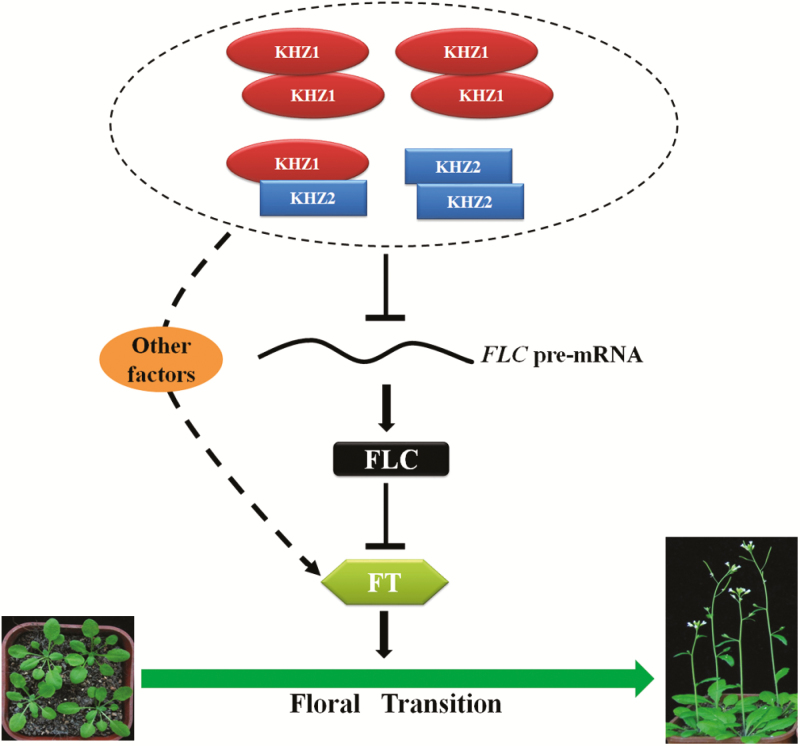Fig. 6.
A working model of KHZ proteins in the regulation of the floral transition. KHZ proteins may function as homodimers or heterodimers (most prominently KHZ1–KHZ1 homodimers) to inhibit the splicing efficiency of FLC, which in turn relieves the inhibition of FT. These events promote the transition from vegetative to reproductive growth. Mutation of FLC cannot fully rescue the late-flowering phenotype of khz1 khz2, but FT overexpression can completely rescue the late-flowering phenotype of khz1 khz2, which indicates that KHZ proteins may also regulate other factors which then modulate FT to promote flowering. (This figure is available in color at JXB online.)

